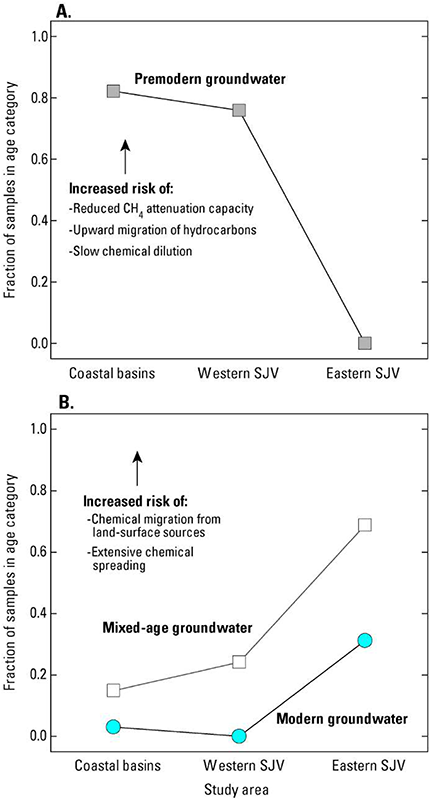California Oil, Gas, and Groundwater Program
Patterns in the Risks to Groundwater Quality in the Vicinity of California Oil Fields
Summary of findings from McMahon and others, 2021
Areas with high recharge and coarser grained sediments allow for both dilution of oil field waters that may have migrated into aquifers and transport of constituents in space and time. These areas are more at risk from surface and near-surface sources of oil field fluids such as produced water disposal ponds.
Areas with low recharge and finer grained sediments are "sluggish"--oil field waters might escape confinement but will stay in localized area. These areas are more at risk from upward-moving oil field fluids.
Groundwater age dating tools can be used to determine what kind of pattern applies to a specific location--modern groundwater is associated with dilution and transport and old groundwater with the opposite.
This finding has implications for monitoring oil field fluid migration pathways.
In Coastal California basins with very old water or in deeper San Joaquin Valley aquifer zones not yet tapped for water use, groundwater is often more than 10,000 years old, indicating that monitoring wells would need to be very close to suspected sources in order to document fluid migration.
In areas where there is significant natural or managed recharge, such as Fruitvale, the Oxnard Forebay, or the Montebello Forebay, modern groundwater is consistently found at shallow and intermediate depths. In these areas, multiple monitoring sites would be needed to understand the extent of constituent transport.

